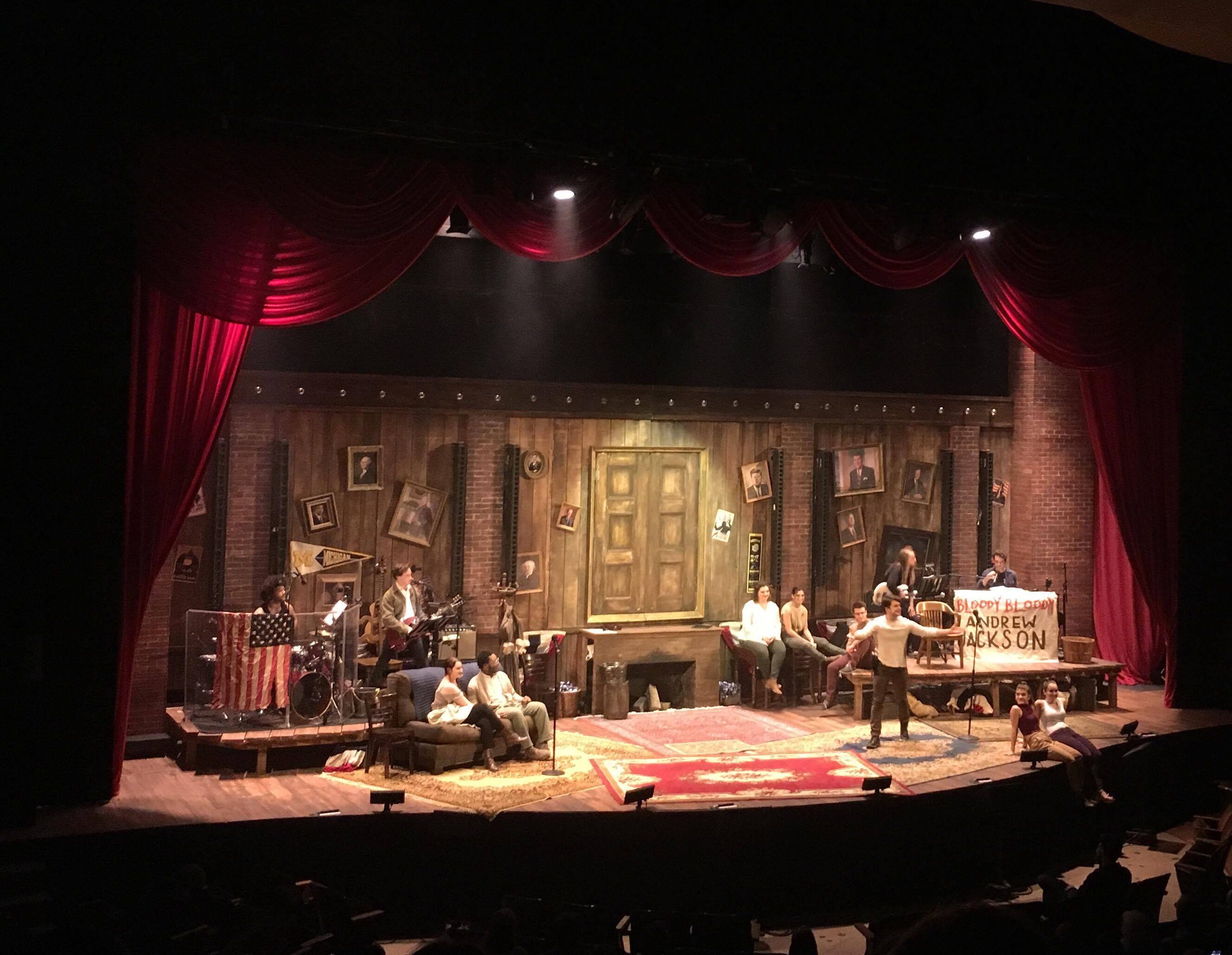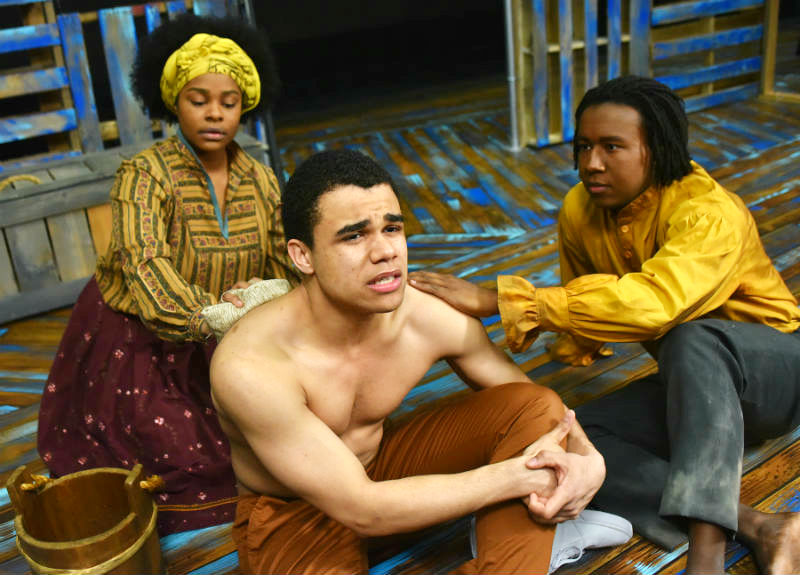The Power Center is one of my favorite venues on campus, With the steep incline of it’s auditorium, floor to ceiling windows, and grey concrete staircases lifting off of the lobby floor I always feel like I’m stepping into the Senate Rotunda from Star Wars when attending an event there. The uniquely sci-fi setting proved to be yet another simultaneously clashing and complementary element in the night’s unique performance, a hybrid of American pop culture featuring the myth around “the king” himself, and Japanese traditional Noh theater, the most ancient theater practice in the world that is still being regularly performed today.
After spotting flyers for the performance scattered across practically every free space on campus, I was curious as to how many people would actually show for the unique event. When I first arrived a half and hour early I was surprised and slightly disheartened to see only a scattering of people in the section of the audience left open for the show, to say nothing of the empty seats above and to either side. Thankfully, as the show’s start time drew nearer more and more people trickled in until before I knew it, the crowd was sizably filled out. Before the performance we had several esteemed guests including the head of UM’s Center for Japanese Studies warmly introduce the nights performance as well as acknowledge the Toyota Visiting Professor program that made the entire event possible.
As someone with little-to-no experience in… well… noh, I only had a vague idea of what we were about to witness. I knew that noh involved slow methodic movement, painstakingly crafted masks, and very little else. Thankfully Theater Ongaku, the troupe that would be treating us to the performance that night first showed off two segments of other performances that they do, to give the audience a sort of “warm up.” I also found it fascinating when they explained that the troupe had members flying in from quite literally all across the world to be there in person, and had done most of their rehearsing in the last few days leading up to the performance, although their polished performance certainly didn’t give the impression of being rushed.
Much to my expectation, the performance was very purposeful and deliberate, which some might also describe as painstakingly slow if they are used to the high energy plays and musicals so popular these days. Additionally, there is no other way to word it, but several of the moments in the performance seemed to be unintentionally comical, with the dissonance between the subject matter and the art itself feeling slightly awkward and the intense acting on the part of the actors far from what most Americans are used to. I certainly spotted a few other audience members in the crowd trying to stifle their laugher as I was myself out of respect for the performers and the art form itself. However it wasn’t until near the end of the performance when the groundskeeper character launched into his lengthy monologue that easily made up a quarter of the script that I realized that many of these moments were intentionally meant to be funny, as the groundskeeper himself acted like a jester, dancing around stage whirling about a pair of women’s panties as a prop.
My personal favorite element of the performance was not even the performance itself, but the beautiful and uniquely crafted garments made for it. The main character of Judy was wearing what appeared to be a traditional Japanese garment sewn out of patched-together denim scraps, combining the American and Japanese elements quite literally. The costumes worn by Elvis were striking as well, especially the enormous gilded cream outfit that he wore, subtly decorated by an elegant feather motif. The photo below, while not taken at the local performance, shows the interesting design of these two garments, especially in contrast with the plain black clothes most of the other performers were wearing.
While I can’t exactly ascertain how faithful the play was to traditional noh theater, it was evident that the troupe had a deep love and appreciation of noh theater, as well as extensive knowledge and training in the subject, so I can only assume that they did it justice.
















